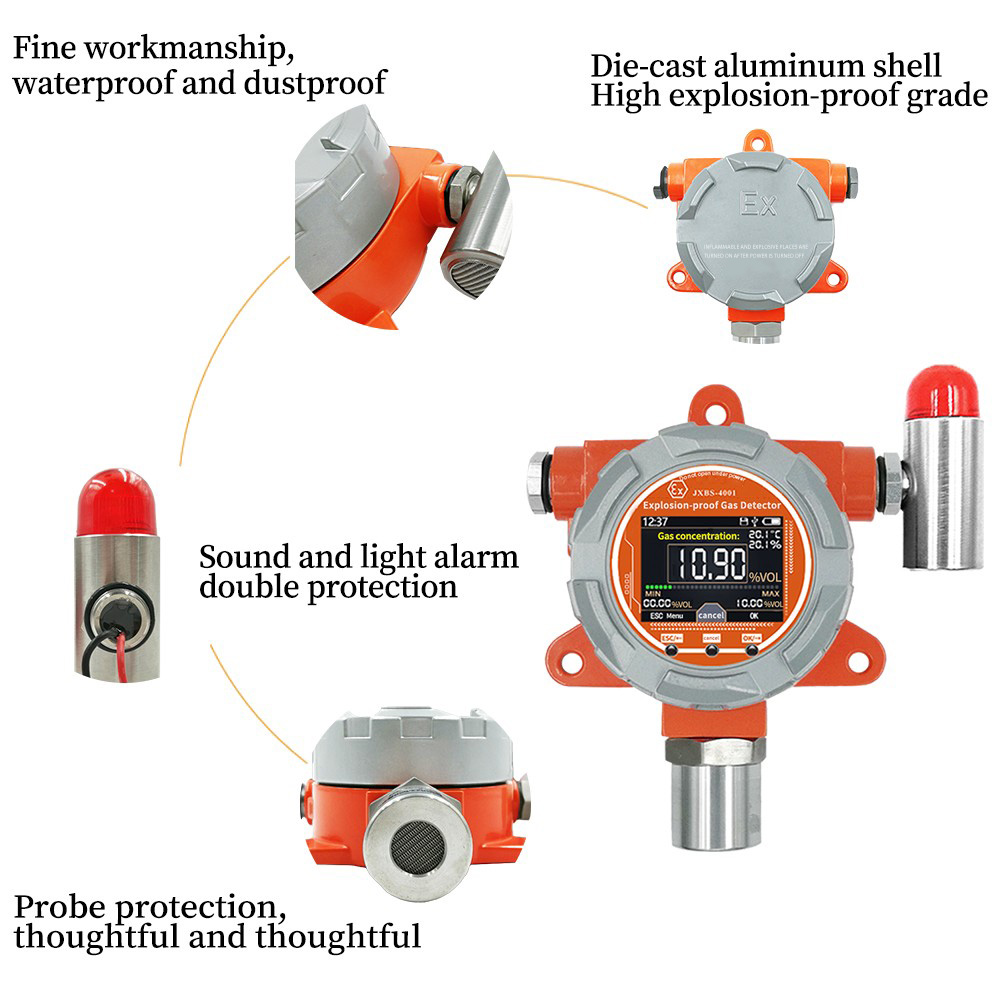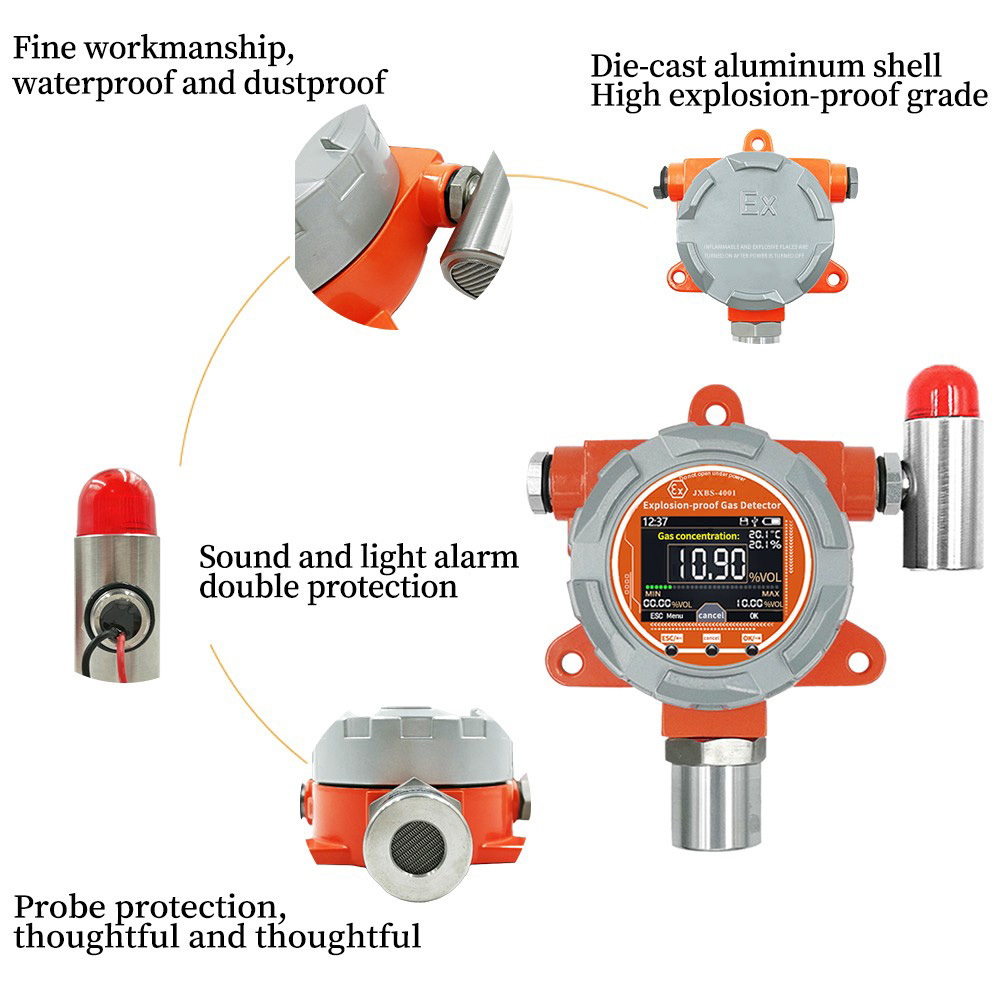Air quality is a critical factor in maintaining human health and safety. Poor air quality can lead to respiratory problems, allergies, and other adverse health effects. Gas sensors have emerged as essential tools for monitoring air quality by measuring the concentration of various gases in the atmosphere. This article explores the significance of gas sensors in monitoring air quality, their applications in different settings, and the benefits they offer in ensuring health and safety.
The Role of Gas Sensors in Monitoring Air Quality:
Gas sensors are devices designed to detect and measure the concentration of specific gases in the environment. In the context of air quality monitoring, gas sensors play a vital role in detecting harmful gases such as carbon dioxide (CO2), carbon monoxide (CO), nitrogen dioxide (NO2), ozone (O3), volatile organic compounds (VOCs), and particulate matter (PM). By continuously monitoring these gases, gas sensors help assess air quality levels and identify potential health risks.

Applications of Gas Sensors in Monitoring Air Quality:
2.1. Indoor Environments:
Gas sensors find extensive use in indoor environments such as homes, offices, schools, and public buildings. These sensors can detect gases emitted from various sources, including combustion appliances, cleaning products, building materials, and human activities. Monitoring indoor air quality helps identify high concentrations of pollutants and enables timely intervention to ensure a healthy indoor environment for occupants.
2.2. Industrial Settings:
Gas sensors are crucial in industrial settings where exposure to hazardous gases is a concern. Industries such as manufacturing, chemical production, and refineries utilize gas sensors to monitor levels of toxic gases, volatile organic compounds, and airborne particles. Early detection of these substances allows for prompt action to protect workers' health, preventing accidents, and minimizing occupational risks.
2.3. Environmental Monitoring:
Gas sensors play a pivotal role in environmental monitoring to assess pollution levels in the atmosphere. By measuring gases such as nitrogen dioxide, ozone, sulfur dioxide, and particulate matter, gas sensors contribute to evaluating air quality in urban areas, near industrial sites, or in regions affected by natural events like wildfires. This information aids in understanding pollution sources, designing mitigation strategies, and making informed policy decisions for environmental protection.
2.4. Public Spaces:
Gas sensors are used to monitor air quality in public spaces such as parks, playgrounds, and transportation hubs. These sensors help assess the impact of vehicle emissions, industrial activities, and other sources of pollution on the air quality in these areas. Monitoring air quality in public spaces enables authorities to take appropriate measures to protect public health and promote a safe and clean environment for everyone.
Benefits of Gas Sensors in Monitoring Air Quality: 3.1. Health Protection: Gas sensors play a crucial role in protecting human health by detecting harmful gases and pollutants in the air. Timely detection and monitoring of gases such as carbon monoxide, nitrogen dioxide, and ozone allow for early intervention and preventive actions. By identifying potential health hazards, gas sensors contribute to reducing respiratory problems, allergies, and other negative health effects caused by poor air quality.
3.2. Safety Assurance:
Gas sensors provide a safety net by alerting individuals or systems when hazardous gas concentrations exceed predefined limits. In cases of gas leaks or abnormal air quality conditions, gas sensors trigger alarms or automatically shut down operations, preventing accidents and ensuring the safety of occupants or workers in both residential and industrial settings.
3.3. Environmental Protection:
Monitoring air quality using gas sensors supports environmental protection efforts. By accurately assessing pollution levels and identifying pollution sources, gas sensors help design effective mitigation strategies and policies. This data-driven approach enables policymakers to implement measures to reduce emissions, improve air quality, and mitigate the impacts of industrial activities and transportation on the environment.
3.4. Data-driven Decisions:
Gas sensors provide real-time, actionable data that can be integrated with other systems or analyzed for decision-making purposes. By combining gas sensor data with weather data, demographic information, and health records, stakeholders can gain insights into the correlation between air quality and human health. This information facilitates evidence-based decision making to address emerging air quality challenges effectively.
Integration and Challenges: Gas sensors can be integrated into various monitoring systems, including buildings' ventilation systems, smart city infrastructure, and wearable devices. Wireless connectivity allows seamless communication between gas sensors and centralized monitoring systems, enabling real-time data collection, analysis, and response. Challenges associated with gas sensors include calibration, accuracy, maintenance, and affordability. Continuous research and development efforts address these challenges, aiming to improve sensor performance, reduce costs, and enhance accessibility.
Conclusion:
Gas sensors play a crucial role in monitoring air quality for health and safety purposes. By detecting and measuring gases in the environment, these sensors contribute to protecting human health, ensuring safety, promoting environmental protection, and facilitating data-driven decision making. Whether in indoor environments, industrial settings, public spaces, or environmental monitoring, gas sensors have become indispensable tools for assessing air quality levels and detecting potential health risks. Continued advancements in gas sensor technology, coupled with increased awareness and collaboration among various stakeholders, will further enhance air quality monitoring efforts and improve health and safety outcomes for individuals and communities.






